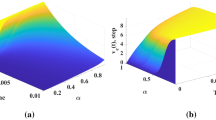
Overview
- Explains what wandering spurs are and how they differ qualitatively from the well-known fixed spurs that plague fractional-N frequency synthesizers
- Provides analytical and simulation methods to study wandering spurs and original analysis of the cause of this recently reported spectral phenomenon
- Presents and analyzes theoretical designs based on a conventional MASH 1-1-1 to mitigate wandering spurs
- Describes measured performance for the discussed designs, confirming their effectiveness in mitigating wandering spurs
Part of the book series: Analog Circuits and Signal Processing (ACSP)
Access this book
Tax calculation will be finalised at checkout
Other ways to access
About this book
Few people know what wandering spurs are; fewer still know how to get rid of them. This book, which is written by those who raised awareness of wandering spurs, explained how they arise, and invented ways to get rid of them, contains valuable insights, analytical techniques and examples that will enable the reader to become an expert in the area. The book is aimed at circuit design professionals who need to ensure that their designs are not compromised by wandering spurs. In addition to insights, theory, and analysis, it contains practical circuit solutions, the performance of which are characterized experimentally.
This book explains—using simulation, analysis, and experimental measurements—what wandering spurs are, how they arise, how to characterize them and, most importantly, how to get rid of them. The authors present not only theoretical analysis and simulation strategies, but also provide an overview of spectral analysis techniques for studying the phenomenon and convincing experimental results from both commercially available and custom-designed monolithic synthesizers.
- Explains what wandering spurs are and how they differ qualitatively from the well-known fixed spurs that plague fractional-N frequency synthesizers;
- Provides analytical and simulation methods to study wandering spurs and original analysis of the cause of this recently reported spectral phenomenon;
- Presents and analyses theoretical designs based on a conventional MASH 1-1-1 to mitigate wandering spurs;
- Describes measured performance for the discussed designs, confirming their effectiveness in mitigating wandering spurs.
Similar content being viewed by others
Keywords
Table of contents (7 chapters)
-
Front Matter
-
Back Matter
Authors and Affiliations
About the authors
Dawei Mai received the Ph.D. degree in electrical and electronic engineering from University College Dublin in 2021. He has published extensively in the field of fractional-N frequency synthesis. He is an expert in the modeling, simulation and analysis of nonlinearity-induced phenomena in frequency synthesizers. He contributed to the analysis of the wandering spur phenomenon in fractional-N frequency synthesizers and invented an effective technique to mitigate wandering spurs.
Michael Peter Kennedy FIEEE received the Ph.D. degree from the University of California at Berkeley and the D.Eng. degree from the National University of Ireland. He has made seminal contributions in the fields of neural networks, chaotic oscillators, chaos communications, mixed-signal testing, digital delta-sigma modulation, and frequency synthesis. He is Professor of Microelectronic Engineering at University College Dublin and Scientific Director of the Microelectronic Circuits CentreIreland.
Bibliographic Information
Book Title: Wandering Spurs in MASH-Based Fractional-N Frequency Synthesizers
Book Subtitle: How They Arise and How to Get Rid of Them
Authors: Dawei Mai, Michael Peter Kennedy
Series Title: Analog Circuits and Signal Processing
DOI: https://doi.org/10.1007/978-3-030-91285-7
Publisher: Springer Cham
eBook Packages: Engineering, Engineering (R0)
Copyright Information: The Editor(s) (if applicable) and The Author(s), under exclusive license to Springer Nature Switzerland AG 2022
Hardcover ISBN: 978-3-030-91284-0Published: 12 March 2022
Softcover ISBN: 978-3-030-91287-1Published: 12 March 2023
eBook ISBN: 978-3-030-91285-7Published: 11 March 2022
Series ISSN: 1872-082X
Series E-ISSN: 2197-1854
Edition Number: 1
Number of Pages: XVI, 160
Number of Illustrations: 107 illustrations in colour
Topics: Circuits and Systems, Microwaves, RF and Optical Engineering, Electronics and Microelectronics, Instrumentation



